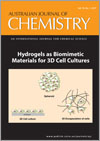
Australian Journal of Chemistry
Volume 70 Number 1 2017
CH16241The Use of Hydrogels as Biomimetic Materials for 3D Cell Cultures
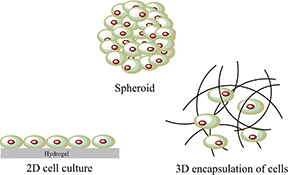
Hydrogels have been gaining increasing popularity as biomimetic materials for their unique properties such as high water content, ease of functionalisation, and high biocompatibility. This highlight article describes the recent developments of hydrogels, with a large focus on the supramolecular variants, in their application for 3D cell cultures.
CH16318S–S Bond Formation: Nanocatalysts in the Oxidative Coupling of Thiols
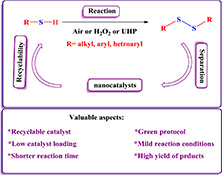
In this paper, we summarize recently reported breakthroughs in the arena of nanocatalysts for the oxidative coupling of thiols to their corresponding disulfides with the goal of stimulating further progress in this field.
CH16088Patterned Copper Sulfide Thin Films: a Method for Studying Leaching Behaviour
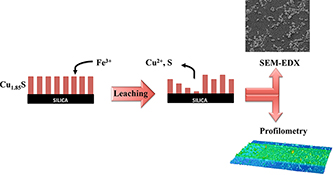
This work presents a practical and simple alternative method for studying the leaching of copper from copper sulfide. It is demonstrated, for the first time, that micro-patterned thin films can be used as a model system for studying mineral leaching of copper-bearing minerals directly by measuring changes in the film thickness using white light interferometric profilometry and changes in the film morphology and elemental composition using scanning electron microscopy coupled with energy-dispersive X-ray spectroscopy.
CH16126Direct Synthesis of Nitriles from Aldehydes and Hydroxylamine Hydrochloride Catalyzed by a HAP@AEPH2-SO3H Nanocatalyst
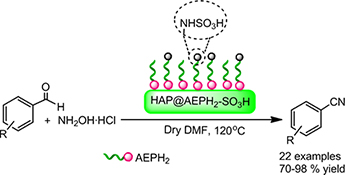
We describe an efficient method for the direct preparation of nitriles from aldehydes and hydroxylamine hydrochloride catalyzed by sulfonated nanohydroxyapatite functionalized by 2-aminoethyl dihydrogen phosphate (HAP@AEPH2-SO3H) as an eco-friendly and recyclable solid acid nanocatalyst.
CH16213Mo(CO)6 as a Solid CO Source in the Synthesis of Aryl/Heteroaryl Weinreb Amides under Microwave-Enhanced Condition
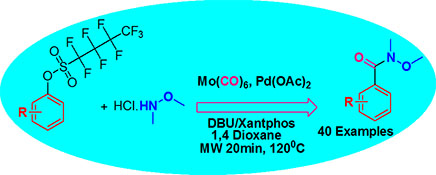
The facile transformation of aryl/heteroaryl nonaflates into corresponding amides via Pd-catalyzed aminocarbonylation using Mo(CO)6 as a solid CO source under microwave-enhanced condition is reported. The method was found to be tolerant with respect to a diverse range of electronically biased aryl/heteroaryl nonaflates, and exceptional yields were obtained. The optimized protocol was further extended to a diverse range of amines.
CH16127Self-Assembly of an Amphiphilic OEG-Linked Glutamide Lipid

Amphiphilic peptides with or without oligoethylene glycol (OEG) chains based on 3,4-bis(benzyloxy)benzoic-linked glutamide were designed and their self-assembly was investigated. The studies showed that the amphiphilic peptide 3 with OEG chains could not only form stable gels in a wide range of solvents, but also allowed control of the width of nanofibres in the gel formed with changing water content.
CH16227The Importance of the Pauli Exchange-Type Repulsions and Hyperconjugative Interactions on the Conformational Properties of Halocarbonyl Isocyanates and Halocarbonyl Azides
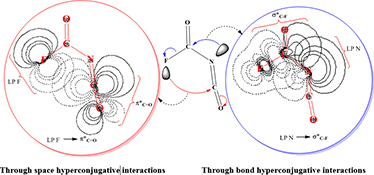
The generalized anomeric relationships in halocarbonyl isocyanates (1–3) and halocarbonyl azides (4–6) result from the cooperative effects of the hyperconjugative generalized anomeric effects (HC-GAE) and Pauli exchange-type repulsion (PETR). The electrostatic model associated with the dipole–dipole interactions (EM-DDI) and the attractive electrostatic interactions (AEIs) between the natural atomic charges have no significant effects on the conformational preferences in compounds 1–3 and 4–6.
CH16228Rheopectic Gel Formation of Stimuli-Responsive Ionic Liquid/Water Mixtures
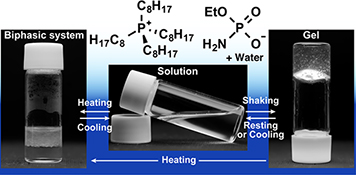
Ionic liquids are composed of ions only. However, they are not always completely soluble in water. Mixtures of phosphonium/phosphonate-type ionic liquids and water prepared herein exhibited stimuli-responsive phase transition, lower critical solution temperature phase transition, and thermoreversible viscosity change, and underwent rheopectic gelation depending on the water content
CH16321Organometallic Complexes for Non-Linear Optics. 59. Syntheses and Optical Properties of Some Octupolar (N-Heterocyclic Carbene)gold Complexes
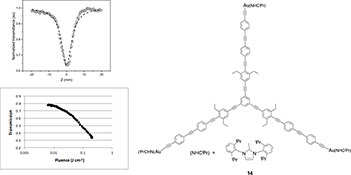
The nonlinear optical (NLO) coefficients of (triphenylphosphine)gold alkynyl complexes are better than those of (N-heterocyclic carbene)gold alkynyl complexes; calculations suggest that the key low-energy transitions are from the (phosphine)gold to the alkynyl ligand in the former, and from the Au-alkynyl group to NHC in the latter.
CH16061Experimental and Quantum Mechanical Study of Nucleophilic Substitution Reactions of meta- and para-Substituted Benzyl Bromides with Benzylamine in Methanol: Synergy Between Experiment and Theory
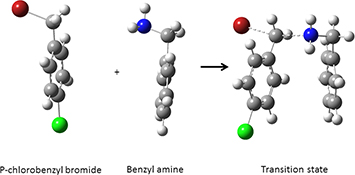
This work involves the experimental and theoretical study of the nucleophilic substitution of meta- and para-substituted benzyl bromides with benzylamine.
CH16202Concerted Pathway to the Mechanism of the Anilinolysis of Bis(N,N-diethylamino)phosphinic Chloride in Acetonitrile
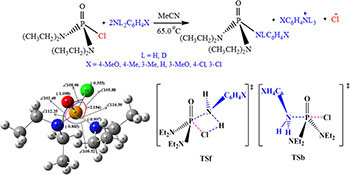
The kinetics of the nucleophilic substitution reactions of bis(N,N-diethylamino)phosphinic chloride with XC6H4NH2(D)2 are investigated in MeCN at 65.0°C. This study examines the substituent effects, deuterium kinetic isotope effects (DKIEs), and mechanism of the phosphoryl transfer reactions. A concerted SN2 mechanism involving the predominant backside attack is proposed.
CH16270Anionic Ring Opening Polymerization of ε-Caprolactone Initiated by Lithium Silanolates
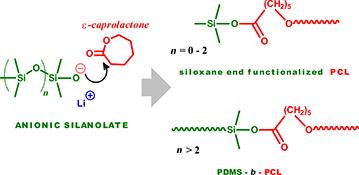
This paper describes a simple way to synthesize poly(caprolactone) or poly(siloxane-block-caprolactone) copolymers through anionic polymerization by employing lithium silanolates.
CH16322Optimised Syntheses of the Half-Sandwich Complexes FeCl(dppe)Cp*, FeCl(dppe)Cp, RuCl(dppe)Cp*, and RuCl(dppe)Cp
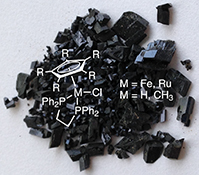
Convenient, multigram scale syntheses of FeCl(dppe)Cp* (pictured), FeCl(dppe)Cp, RuCl(dppe)Cp*, and RuCl(dppe)Cp are described.
CH16214Al2O3 Microspheres Prepared by Cathode Plasma Electrolysis
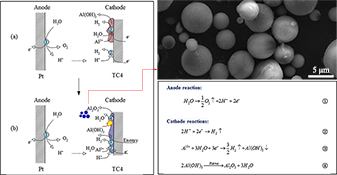
Al2O3 microspheres were prepared by cathode plasma electrolysis without additional heating treatment. The microspheres, with diameters of 5–30 μm, consisted of γ-Al2O3 and α-Al2O3. The mechanism and model were put forward in the formation process.



